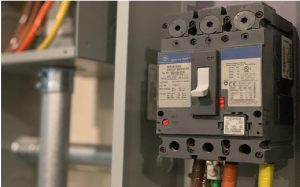5 Electrical Safety Tips For The Workplace

In 2018, electricity accounted for 3% of all work fatalities, 2.6% in 2017, and 21.9% in 2016. All these were due to electric shocks alone and none from electrical burns. These high statistics highlight that electrical safety is essential in the workplace.
Almost all equipment in the office today uses electricity. Such equipment is dangerous and can cause shock or burns if employees don’t follow proper guidelines.
There is still a long way to go in the workplace to ensure that everyone is safe from electric hazards. Electric safety tips may differ from industry to industry. In this article, we provide generalized safety tips for the workplace.
Types of Electrical Injuries in the Workplace and How They Happen
The electrical injuries that occur in the workplace are electrocution, falls, burns, and electric shock.
Injuries can happen in various ways, including when any body part gets in touch with the current, direct contact with electric circuits or burns from electrical fires.
The typical electric hazards in the workplace are the use of extension cables, broken cords, handling equipment with wet hands, overloaded outlets, faulty wiring, and poorly installed equipment.
1. Do Not Overload Outlets

Ensure that the electric outlets only carry what they can support. Employees may want to charge phones, iPad, and laptops, which may weigh down on the outlets. If it is an extension, don’t load it more than the current it can support.
Companies design electrical circuits in such a way that they can handle a certain amount of electricity. Overload happens when a person draws out more power than the current can handle.
Overloading outlets can cause electrical fires, overheating, and melt the wire. To prevent overloads, avoid extension cords and other multi-outlet converters. Employees should plug all major appliances such as printers and fans directly to the wall outlet.
2. Wear Personal Protective Equipment
If you are working in factories, you may need protective wear to reduce any electrical accident risk. It is crucial to use non-conductive tools, such as insulated equipment, to help prevent shocks and exposure to electricity.
Other protective gears include helmets and protective clothing. In typical offices, protective equipment includes not touching the socket with water and using insulated tools when adjusting anything on the power outlet. You can use electric testers to check for current flow instead of bare hands.
3. Do Not Plug Two Extension Cords Together
If you must use extension cords, do not overload them by plugging two together. An extension can handle a limited amount of current. It would help if you did not use them to connect household items. All of them come with a fixed length, and that is how they should operate.
The workplace has many tools that require electricity, and it may be tempting to join cords together. Overloading the cords can lead to overheating, melting of the insulating material, and even fire.
The safety rules at the workplace must include a section that teaches employees not to use extension cords as a long-term solution. Once you connect many cables, one after another, you increase the resistance of the cables. The result is electric shocks and fires.
4. Ensure to Prevent Any Accidental Electric Contact

A workplace is a busy place, and staff can forget and get in contact with electricity by accident. For example, if open wires are lying around, it is easy to get an electric shock if they touch it by mistake.
Similarly, if it is a job site, let’s say a construction site with different crews working on the same area, it is highly likely for accidents to occur.
One way to prevent electrical accidents is to de-energize all electrical components that you are not using and shut off the power until when you need it.
Another way is to create a barrier by installing insulating material around electrical equipment, such as sockets. It is also vital to put signs that notify employees in areas of electrical hazards.
5. Grip the Plug While Unplugging Cord
Don’t just pull the cord when unplugging an extension cord, grip the plug. When you remove the wire, it may cause some tear that, when touched, can cause electric shocks.
When you damage or break power cords, you create an electrical hazard. Another employee may touch it unknowingly and get a shock.
Before unplugging, switch off the socket, then hold firmly to the plug and pull it out.
Conclusion
Electrical accidents are dangerous and fatal. The workplace is a vulnerable area that puts anyone at risk of coming across these accidents if they don’t follow guidelines.
Therefore, every workplace must understand and follow the safety guidelines regarding electric safety. Most of the above guidelines are easy to follow to ensure safety at the workplace.






